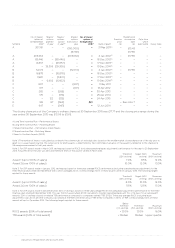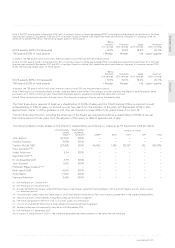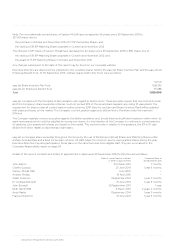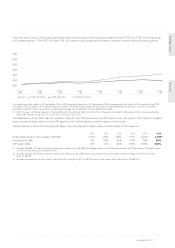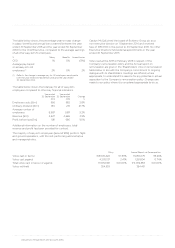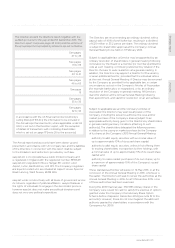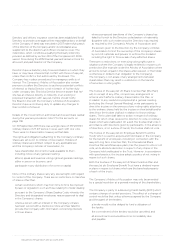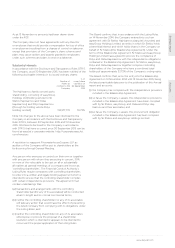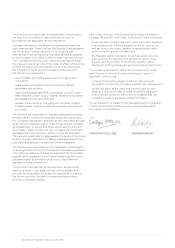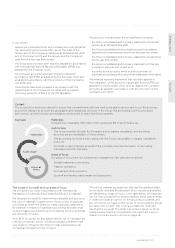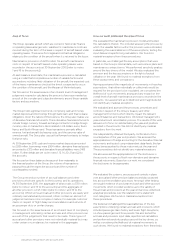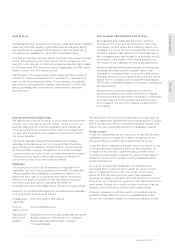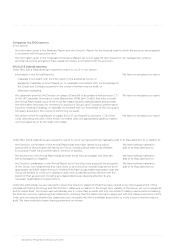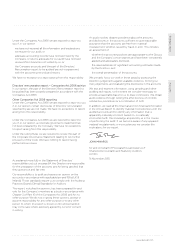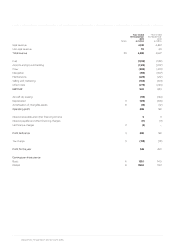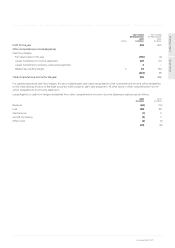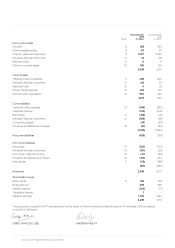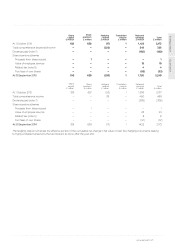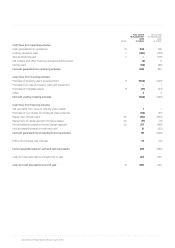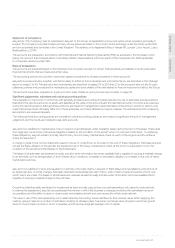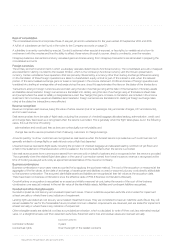EasyJet 2015 Annual Report Download - page 90
Download and view the complete annual report
Please find page 90 of the 2015 EasyJet annual report below. You can navigate through the pages in the report by either clicking on the pages listed below, or by using the keyword search tool below to find specific information within the annual report.
86 easyJet plc Annual report and accounts 2015
Independent auditors’ report to the members of easyJet plc continued
Area of focus How our audit addressed the area of focus
Aircraft maintenance provisions
The Group operates aircraft which are owned or held under finance
or operating lease arrangements. Liabilities for maintenance costs are
incurred during the term of the lease in respect of aircraft leased under
operating leases. These arise from legal and contractual obligations
relating to the condition of the aircraft when it is returned to the lessor.
Maintenance provisions of £205 million for aircraft maintenance
costs in respect of aircraft leased under operating leases were
recorded in the accounts at 30 September 2015 (refer to notes
1 and 16 to the accounts).
At each balance sheet date, the maintenance provision is calculated
using a model that incorporates a number of variable factors and
assumptions including: likely utilisation of the aircraft; the expected cost
of the heavy maintenance check at the time it is expected to occur;
the condition of the aircraft; and the lifespan of life-limited parts.
We focused on this area because of an inherent level of management
judgement required in calculating the amount of provision needed as
a result of the complex and subjective elements around these variable
factors and assumptions.
We evaluated the maintenance provision model and tested
the calculations therein. This included assessing the process by
which the variable factors within the provision were estimated,
evaluating the reasonableness of the assumptions, testing the
input data and reperforming calculations. We found no
material exceptions from these procedures.
In particular, we challenged the key assumptions that were
based on the Group’s internal data, such as business plans and
maintenance contract terms. We performed sensitivity analysis
around the key drivers of the model. We also evaluated the
provision and the key assumptions in the light of actual
utilisation in the year. We found no material exceptions from
these assessments and comparisons.
Having ascertained the magnitude of movements in those key
assumptions, that either individually or collectively would be
required for the provision to be misstated, we considered the
likelihood of such movements arising and any impact on the
overall level of aircraft maintenance provisions recorded in the
accounts. Our assessment as to likelihood and magnitude did
not identify any material exceptions.
Treasury operations
The Group holds significant net funds, comprising cash and money
market deposits and borrowings through bank loans and finance lease
obligations. Given the nature of the business, the Group also makes use
of derivative financial instruments. These derivative financial instruments
include foreign currency forward exchange contracts to hedge foreign
currency risks on transactions denominated in US dollars, euros, Swiss
francs and South African rand. These transactions primarily affect
revenue, fuel and aircraft dry leasing costs, and the carrying value of
owned aircraft. The Group also uses jet fuel forward contracts to hedge
fuel price risks.
At 30 September 2015, cash and money market deposits amounted
to £939 million, borrowings were £504 million, derivative financial assets
amounted to £172 million and derivative financial liabilities were £469
million. Further details are set out in notes 1, 12, 14, 20, 21 and 22 to
the accounts.
We focused on these balances because of their materiality to
the financial position of the Group, the volume of transactions
passing through the respective accounts and the number of
counterparties involved.
We evaluated and assessed the processes, procedures and
controls in respect of the Group’s treasury and other
management functions which directly impact the relevant
account balances and transactions. We tested management’s
year end account reconciliation process. The results of this work
allowed us to focus on substantiating the year-end positions
recorded in the accounts. We did not identify any material
exceptions from this work.
We independently obtained third-party confirmations from
counterparties of the year end positions. We assessed the
appropriateness of hedge accounting for the derivative financial
instruments and tested, using independent data-feeds, the fair
values being ascribed to those instruments at the year end.
These procedures did not identify any material exceptions.
We also assessed the appropriateness of the disclosures in
the accounts in respect of both non-derivative and derivative
financial instruments. Based on our work, we considered
the disclosures to be appropriate.
Accruals and other provisions
The Group records a number of accrual balances and other
provisions which are specific to the business and its operations.
At 30 September 2015, the aggregate of all accruals is £310 million
(refer to notes 1 and 13 to the accounts) and the aggregate of
all other provisions is £21 million (refer to notes 1 and 16 to the
accounts). Whilst some accruals and other provisions are easily and
ordinarily calculated and processed, others contain an element of
judgement and are more complex in nature, for example customer
claims in respect of flight delays and cancellations and refunds of
air passenger duty or similar charges.
We focused on this area because of an inherent level of complexity
in management estimating certain accruals and other provisions as
a result of the judgements that need to be made. These types of
accrual and other provisions were not individually material but may,
under certain circumstances, be material in the aggregate.
We evaluated the systems, processes and controls in place
over accrual and other provision balances and also assessed
key account reconciliation processes. Amongst other testing,
we sought evidence of post year end cash and other account
movements which provided evidence as to the validity of
the accruals and provisions at the year end and we undertook
analytical procedures over the related income statement
cost categories. We found no material exceptions from
these procedures.
We tested and challenged the reasonableness of the key
assumptions underlying certain accruals and provisions, which
included passenger claim history and levels, flight disruptions,
no-show passengers and time periods. We also tested the
accruals and provisions input data, reperformed calculations
and performed sensitivity analysis around the key drivers, as
well as considering the likelihood of material movements to
such drivers. We found no material exceptions from these tests.


